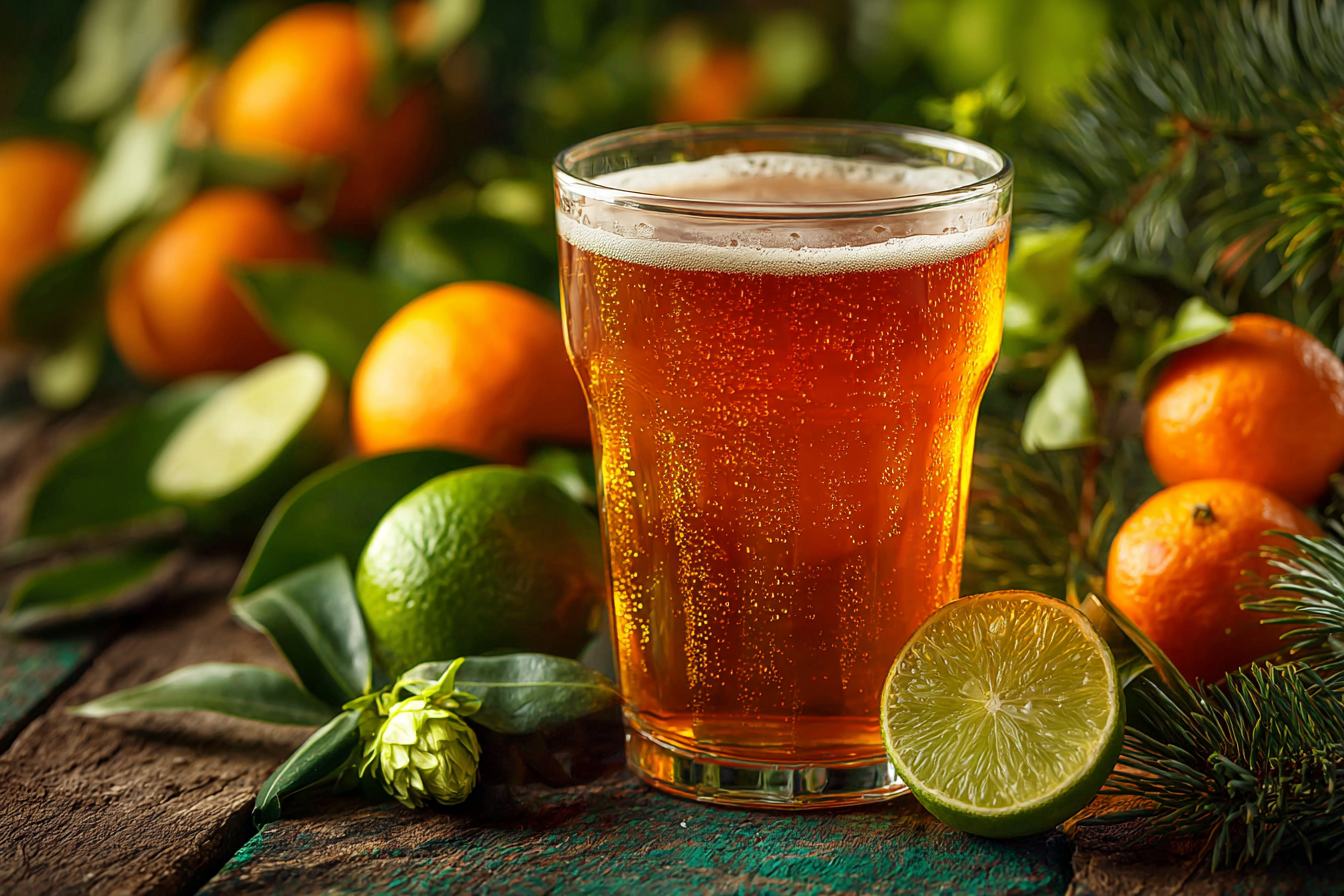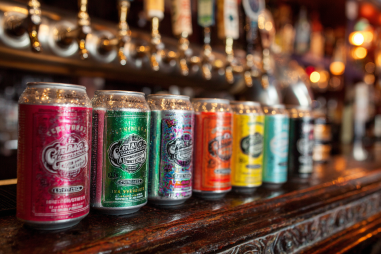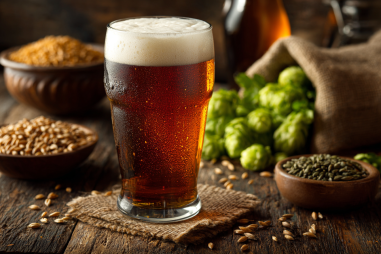The West Coast IPA is known for its bold and invigorating aromas, serving as a gateway to the distinct flavor profile that defines this popular beer style. When you bring a glass of West Coast IPA to your nose, you’re invited into an aromatic world filled with piney resin, sharp citrus, and sometimes floral or herbal notes. These scents are not just pleasant; they set the stage for the tasting experience that follows and are essential in understanding what makes West Coast IPAs a staple in the craft beer community. Let’s dive into what gives this style its signature aromas, the science behind those captivating scents, and how they shape the way we appreciate these beers.
The Importance of Aroma in Beer Tasting
Aroma plays a crucial role in beer tasting, often influencing our expectations and perceptions before the first sip even touches the palate. Our sense of smell is closely linked to taste, and the aromatic compounds in beer can either enhance or detract from the drinking experience. In the case of West Coast IPAs, the aroma serves as a preview of the hop-forward bitterness and crisp flavors that lie ahead. Smelling the beer deeply allows you to pick up on complex layers—whether it’s the sharpness of grapefruit, the earthiness of pine needles, or the subtle floral notes—that can enrich your overall appreciation of the brew.
Typical Aromatic Notes in West Coast IPA
West Coast IPAs typically feature a vibrant and assertive aroma profile. Here are the key notes you’re likely to encounter:
- Pine and Resin: One of the most distinctive aromas, pine resin brings a sharp, woodsy scent that distinguishes West Coast IPAs from other IPA styles. It evokes the sensation of fresh-cut pine or sap, often lending a slightly bitter, earthy undertone.
- Citrus Fruits: Bright notes of grapefruit, lemon, and sometimes orange zest dominate the citrus profile. These aromas lend a refreshing quality and balance the beer’s bitterness.
- Tropical and Floral: Depending on the hops used, you might find hints of tropical fruits like mango or pineapple, as well as delicate floral or herbal undertones adding complexity.
- Earthy and Spicy: Some West Coast IPAs carry subtle notes of earthiness or spice, which can come from both hops and yeast, enhancing the beer’s layered aroma.
Hop Compounds Responsible for Aroma
The aromatic bouquet of West Coast IPAs primarily stems from specific hop compounds. Here’s a look at the main contributors:
- Myrcene: This is the most abundant hop oil and gives off pine, citrus, and herbaceous notes. Myrcene’s strong, resinous profile forms the backbone of the aroma.
- Limonene: Responsible for the citrusy aromas, limonene lends notes of lemon, orange, and grapefruit zest.
- Caryophyllene: This compound imparts spicy, woody, and sometimes peppery aromas, rounding out the complexity.
- Humulene: Contributing to floral and earthy tones, humulene adds subtle aromatic depth.
These hop oils are volatile and delicate, which is why harvesting, storing, and brewing techniques closely affect the final aroma of the beer.
Techniques to Enhance Aroma in Brewing
Craft brewers use several methods to maximize hop aroma in West Coast IPAs, underscoring their commitment to sensory impact:
- Dry Hopping: This involves adding hops after the boil, during fermentation or conditioning. It increases the concentration of aromatic oils without adding bitterness, creating that punchy pine and citrus smell.
- Hop Selection: Choosing specific hop varieties known for their aromatic oils, such as Cascade, Simcoe, or Centennial, is crucial. Each variety offers a unique blend of the compounds that define the style.
- Temperature Control: Keeping fermentation temperatures steady helps preserve delicate hop aromas. Too much heat or oxidation can cause aroma degradation.
- Timing of Hop Additions: Adding hops late in the boil preserves volatile oils, ensuring the aroma remains fresh and intense.
How Aroma Influences Perception of Flavor
The aroma of West Coast IPA doesn’t just complement the flavor—it actively shapes how we interpret it. The piney, resinous, and citrus scents prepare your palate for the bitterness and crispness that follow. When you inhale the bright and complex aroma, it can make the beer taste more vibrant and refreshing than if the nose were muted.
Because aroma and taste are so intertwined, a West Coast IPA’s fragrance often tricks the brain into perceiving more flavor. This is why the same beer can taste quite different depending on how aromatic it is when poured and how deeply you smell it beforehand. For many enthusiasts, the aromatic burst is one of the most thrilling aspects of the style, elevating the drinking experience to a multi-sensory encounter.
Aroma Variations Among Brewers
Though West Coast IPAs share core aromatic characteristics, different brewers’ interpretations can vary widely based on their hop blends and brewing practices:
- Hop Choices: Some breweries prefer pine-heavy hops, while others emphasize citrus-forward varieties, resulting in either a more resinous or fruitier aroma.
- Bittering vs. Aroma Hops: The balance brewers strike between hops added for bitterness and those added for aroma affects the scent profile.
- Adjuncts and Yeast: Occasionally, brewers incorporate specific yeast strains or adjunct ingredients that subtly shift the aroma toward tropical fruits or spicy notes.
- Regional Water Profiles: Water chemistry can influence how hops express aroma compounds, meaning the same recipe may smell slightly different when brewed in different locations.
These elements combine to give each West Coast IPA a unique aromatic fingerprint, inviting drinkers to explore and appreciate subtle variations.
Pairing Aroma with Food and Environment
The aromatic intensity of West Coast IPAs makes them an excellent companion for particular foods and settings. Here’s how to enhance your experience:
- Food Pairings: The bold pine and citrus aromas complement spicy dishes—think spicy Mexican or Indian cuisine—because they provide a refreshing counterpoint. Grilled meats, sharp cheeses, and dishes with herbal elements also work beautifully, as the floral and pine notes highlight similar flavors.
- Environmental Pairings: Enjoying a West Coast IPA outdoors, especially in sunny, pine forest environments or coastal settings, can enhance the sensory connection. The natural surroundings echo the beer’s pine and citrus aromas, creating a harmonious experience.
- Glassware and Pouring: Using a tulip or IPA glass can help concentrate these aromas toward your nose. Pour gently to avoid excessive carbonation loss, which helps keep the hop oils fragrant.
Savoring the Scent of West Coast IPA
Next time you pour a West Coast IPA, take a moment to breathe deeply and savor its aromatic complexity. The piney resin, zesty citrus, and layered floral and earthy notes are not just a prelude—they are an integral part of the beer’s identity. Understanding the sources and nuances of these aromas enriches the tasting experience and deepens your appreciation for the craftsmanship behind each glass. Whether you’re an avid hop head or just exploring the style, embracing the lively scent of West Coast IPAs will open a whole new dimension to your beer enjoyment.







